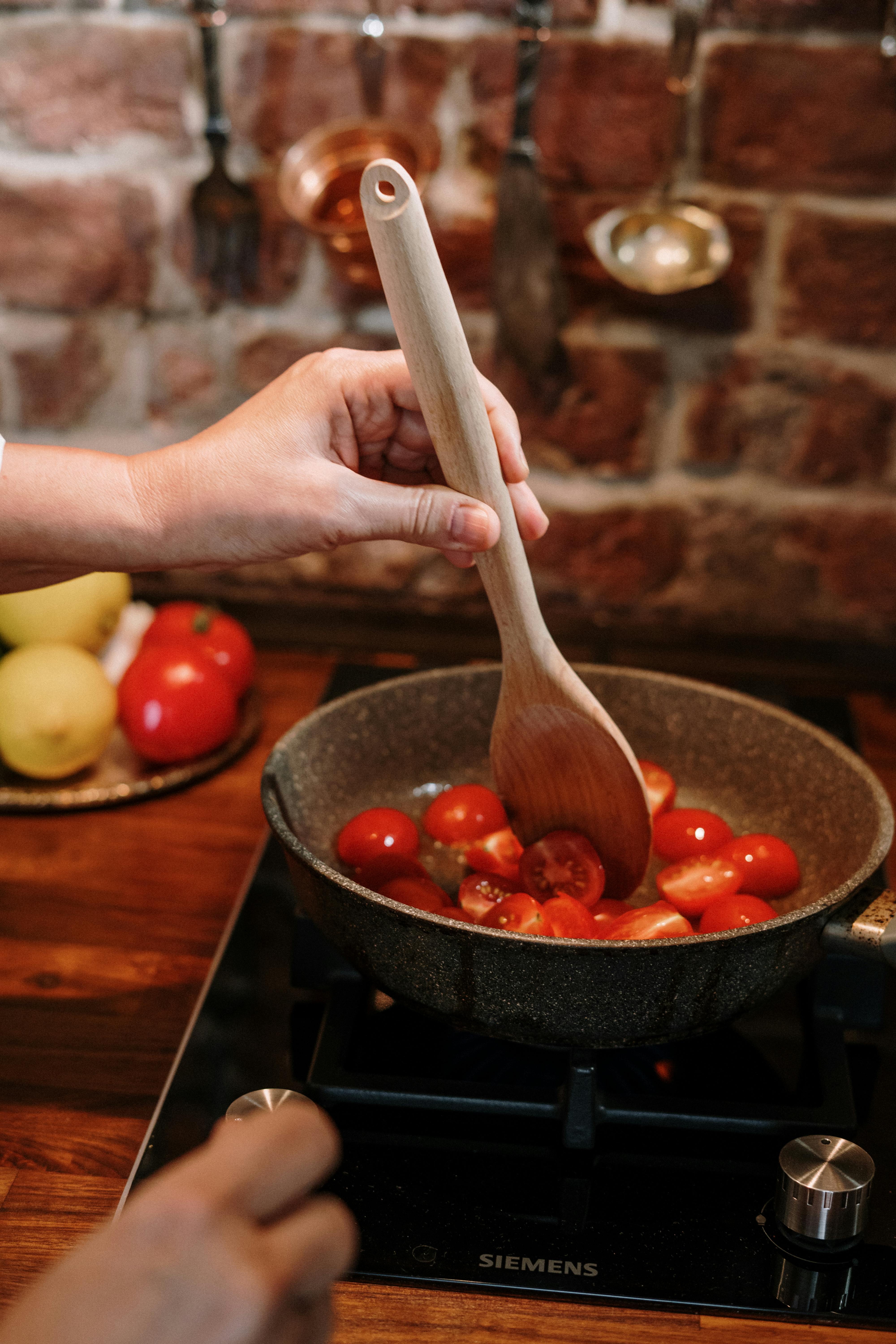Best 5 Escarole Substitutes for Delicious Recipes in 2025
Escarole, with its mildly bitter and slightly crunchy texture, is a versatile green that plays a pivotal role in many recipes. It’s often included in salads, soups, and stir-fries, providing both flavor and nutrition. However, cooking can sometimes present challenges, such as when escarole is unavailable or if you seek to experiment with new flavors. In this guide, we'll explore the best escarole substitutes, ensuring you have flavorful alternatives ready for your culinary creations.
Using a substitute for escarole can add a unique twist to dishes while maintaining the healthy benefits of leafy greens. Each alternative offers a different flavor profile and texture, allowing for creative cooking with escarole-inspired recipes. This article will cover the top five substitutes you can use in 2025, along with tips on how to integrate them into your favorite dishes.
Key points to consider include:
- Flavor profiles of different greens
- Practical cooking tips
- Nutritional values and health benefits of each substitute
Let’s dive into these fantastic escarole alternatives!
Understanding Escarole and Its Culinary Uses
Before we delve into the alternatives, it’s essential to understand what escarole is and how it is used in cooking. Escarole is a leafy green vegetable that belongs to the chicory family. It is characterized by its broad, curly leaves and robust flavor, making it a staple in many Italian and Mediterranean dishes. Common uses include escarole salads, soups, and as a sautéed side. The unique taste of escarole comes from its delicate balance of bitterness and sweetness, allowing it to pair well with various ingredients, particularly proteins.
When cooking with escarole, various methods such as sautéing, baking, or adding it raw to salads can be employed. Its nutritional profile is commendable too, being rich in vitamins A, K, and folate, alongside fiber.
Now, let’s explore some excellent escarole alternatives that can seamlessly integrate into your recipes!
1. Endive: The Closest Match
Endive is one of the closest substitutes for escarole due to its similar flavor and structure. With a crisp texture and slightly bitter flavor, endive can easily stand in for escarole in most dishes. It serves well in salads, as it retains its crunch even when dressed, making it perfect for creating vibrant salads reminiscent of escarole salads.
When using endive, remember that it has a more pronounced bitterness compared to escarole; thus, it may require balancing flavors with sweeter dressings or ingredients. For instance, incorporating fruits such as pears or apples can enhance the overall dish, complementing the endive’s flavor profile.
Endive also works beautifully when sautéed, offering a delightful contrast to rich flavors without overpowering them. To implement endive in recipes that call for escarole, simply substitute it in equal amounts, adjusting for taste as needed.
2. Kale: A Nutritious Alternative
Kale is another leafy green that can serve as a robust substitute for escarole. It is known for its dense nutrients and slightly peppery flavor, which lends itself well to various cooking methods. Kale can be used fresh in salads or cooked in soup recipes that traditionally feature escarole.
When substituting, it is important to consider kale's tougher leaves compared to escarole. To enhance tenderness, it’s beneficial to massage the kale leaves with a bit of olive oil. This not only softens the leaves for salads but also infuses them with flavor.
In addition, kale’s rich nutritional profile makes it an excellent choice for health-conscious individuals. It’s packed with antioxidants and vitamins, providing a wholesome alternative to escarole.
Using kale instead of escarole might require adjusting cooking times, especially when sautéing or adding it to soups, as it often requires a bit more time to soften.
3. Swiss Chard: Flavorful and Versatile
Swiss chard is a vibrant green that pairs well with a variety of dishes and can effectively replace escarole. Its slightly earthy flavor is complemented by a touch of sweetness, making it an excellent addition to recipes that call for escarole. Additionally, the colorful stems of Swiss chard can add visual appeal to your dishes, enhancing presentation.
Swiss chard works well in both raw and cooked preparations. For instance, you can use it like escarole in salads or stir-fries. When cooking with Swiss chard, it is recommended to remove the tough stems and cook them separately, as they will require longer cooking times compared to the leaves.
To substitute Swiss chard for escarole, you can use it in a one-to-one ratio, adjusting flavors to balance its sweetness with other ingredients in your dish.
4. Romaine Lettuce: A Crunchy Option
If you are looking for a more common substitute, romaine lettuce could be your best bet. While it does not share the same bitterness as escarole, romaine offers a crunchy texture that can work well in salads or as a light addition to dishes where escarole would typically be used.
Romaine lettuce has a mild flavor that allows it to pair with a wide range of ingredients, making it a great option for vibrant, refreshing salads. It's essential to note that while romaine is lower in nutrients compared to escarole, it can still make your dishes enjoyable when paired with robust dressings or toppings.
Using romaine in place of escarole is straightforward; simply replace it in equal proportions. You might want to amplify flavors with spices or seasonings to enhance the overall taste of the dish.
5. Mustard Greens: A Spicy Kick
For those who enjoy a bit of heat, mustard greens can be a fantastic substitute for escarole. These greens possess a spicy flavor that can invigorate your dishes and provide a unique twist to traditional recipes. Mustard greens work well in soups, stir-fries, and even salads if prepared with a complementary dressing.
It's important to approach mustard greens carefully, as their spiciness can overwhelm more delicate flavors. A key tip is to balance their heat by combining them with milder ingredients or by briefly cooking them to slightly tame their intensity.
When substituting mustard greens for escarole, you might want to reduce the quantity initially to assess the flavor balance—start with about three-quarters the amount and adjust according to taste.

Cooking Tips for Integrating Escarole Substitutes
When cooking with substitutes for escarole, there are a few key tips to consider to ensure a successful outcome:
- Flavor Balancing: Many substitutes have distinct flavors that may differ from escarole, so enhancing other ingredients in your dish can help balance flavors while retaining a delicious overall taste.
- Cooking Techniques: Adjust cooking methods based on the texture and toughness of the greens you choose. Some may require longer cooking times, while others are best used raw.
- Textural Considerations: While escarole adds a unique crunch, ensure that your substitutes also contribute an appealing texture. This will enhance the overall enjoyment of your dish.
Experimenting with different preparations can allow you to discover the best ways to highlight the unique flavors of your chosen green, enhancing your culinary experience.
Health Benefits of Escarole Substitutes
Exploring various greens in your cooking not only introduces unique flavors but also offers an array of health benefits. Many escarole substitutes are rich in vitamins, minerals, and phytonutrients that support overall health. For instance:
- Chard: Rich in vitamins A, K, and C, Swiss chard provides antioxidants that help protect against chronic diseases.
- Kale: High in calcium, fiber, and numerous vitamins, kale supports cardiovascular health and digestive function.
- Mustard Greens: These greens are not only low in calories but also high in vitamins A, C, and K, providing anti-inflammatory properties.
Adding variety to your greens not only diversifies flavors but also ensures that you are maximizing nutritional benefits in your meals. Consider planning your grocery shopping around seasonal vegetables to enhance your diet further.

Conclusion: Embrace Culinary Diversity with Escarole Substitutes
Choosing the right escarole substitute can enhance your cooking while adding exciting new flavors to your dishes. Whether it's the mild and nutty notes of endive or the spicy kick of mustard greens, each alternative offers unique qualities that not only replicate the texture of escarole but also bring their health benefits and vibrant characteristics to the plate.
Don’t shy away from experimenting with different greens, and consider incorporating them into salads, soups, and stir-fries to enrich your meal experience. By understanding the flavor profiles and characteristics of escarole alternatives, you can creatively expand your culinary repertoire and enjoy healthy, delicious dishes throughout the year.
Next time you're in the kitchen, remember that the world of greens offers plenty of delicious opportunities—choose your substitute wisely and let your creativity flourish!
